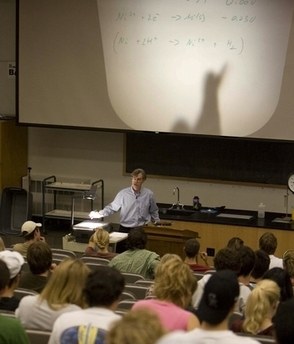Analysis: Universities overproduce Ph.Ds in US
Updated: 2008-01-21 10:04
US college students are getting a raw deal, a recent New York report asserted. The problem is they're taking too many classes from part-time, or adjunct, professors.
|
|
But that same report unwittingly revealed something about how higher education is more culpable than it likes to admit when it comes to creating the problem.
The issue is a huge one in higher education far beyond New York, with about half of the nation's college faculty now on part-time contracts. Adjuncts are cheaper for colleges, but they often lack the time and resources for focused teaching, and research shows students' performance suffers if they are taught by part-timers too often.
In its report last month, a 30-member commission called for New York's state (SUNY) and city (CUNY) systems to alleviate the over reliance on adjuncts by hiring 2,000 more full-time faculty for their 87 campuses.
But just one page away, the report also called for adding at least 4,000 new doctoral students.
There's a connection between those numbers that deserves more attention.
In many fields, there are already too many Ph.Ds awarded for the full-time academic posts available, creating a surplus of likely jobseekers. That pool becomes adjuncts, who command wages and benefits so low that universities find them irresistible hires.
"It's not uncommon to have a disconnect like this in higher education, in which people are both concerned about the difficult career prospects being faced by recent Ph.D. graduates and concerned there aren't enough Ph.D. students," said Michael Teitelbaum, of the Alfred P. Sloan Foundation.
The ideas, he said, "often don't get connected. It's puzzling."
Adds Jeff Crane, an adjunct who teaches two art courses at SUNY-New Paltz: "There's this tendency to turn a blind eye to things like that and not make those kinds of equations."
Of course, some adjuncts have other jobs and like working part-time. But many are adjuncts by necessity. Crane, an artist, says he likes working part-time so he can paint, but thinks he should be paid equitably. He earns about $5,200 per semester for teaching two courses.
|
|
|
||
|
||
|
|
|
|


